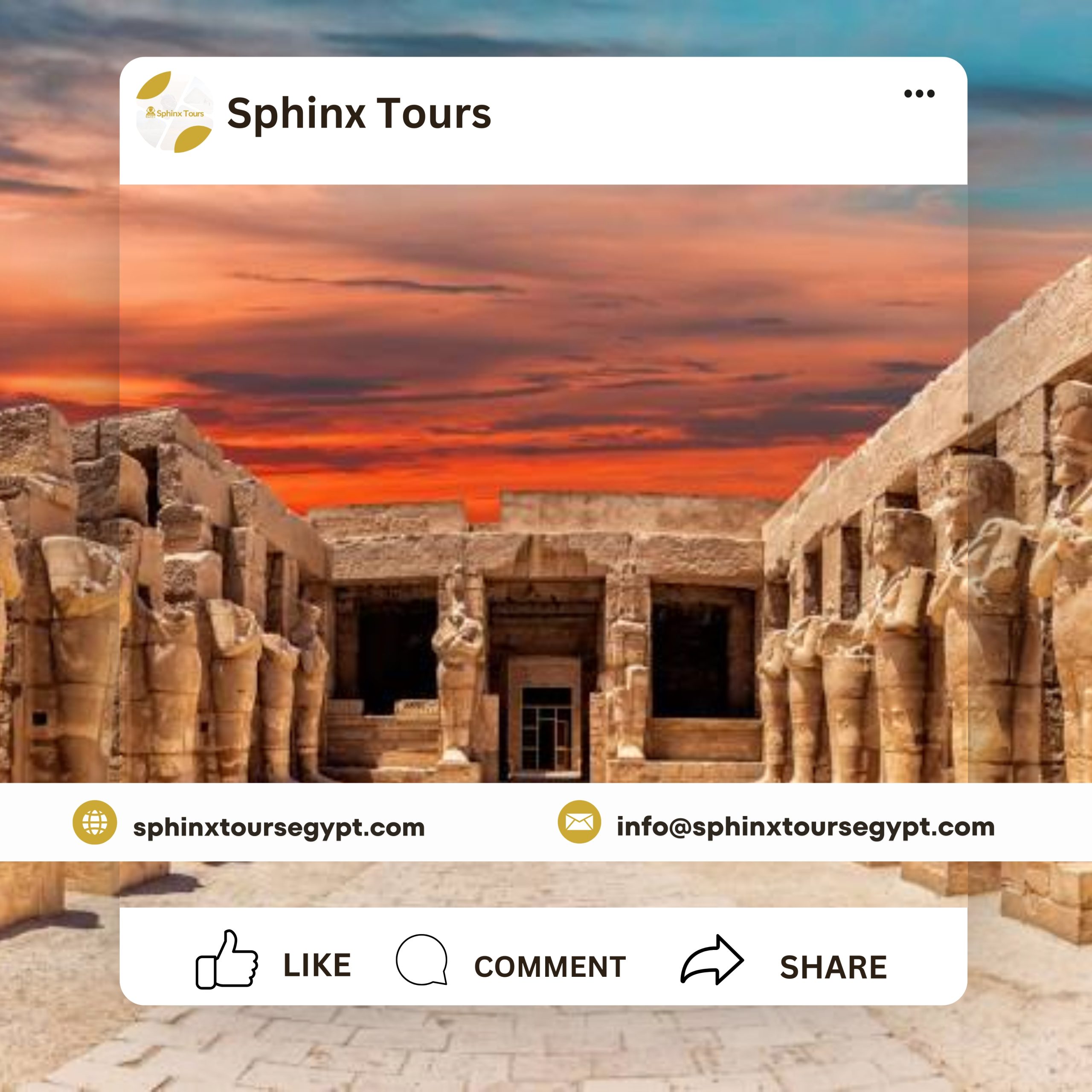Why was the Karnak Temple named so?
The name: The temple was named after the city of Karnak, which is a modern name derived from the Arabic word “Khornaq,” meaning the fortified village, which was given to many temples in the region during this period.
Karnak Temple in Luxor
The ancient Egyptians called Luxor Temple Ipet Resit, meaning “Southern Sanctuary“, because of its location within ancient Thebes (modern Luxor). The temple is located about three kilometers south of the Karnak Temple, which was once connected by a causeway lined with sphinxes and ram-headed sphinxes. The earliest evidence of this temple dates back to the 18th Dynasty (c. 1550-1295 BC).
Like most other ancient Egyptian temples, Luxor Temple was not on an east-west axis, but oriented toward Karnak. This is because Luxor Temple was the main site of one of the most important ancient Egyptian religious festivals, when statues of the gods Amun, his wife Mut, and their son, the moon god Khonsu, were carried in a grand procession from their temples at Karnak to Luxor Temple so they could visit the resident god Amun-em-Opet, a celebration known as the Opet Festival.
The Luxor Temple was not built by a single king. Its oldest structure was a shrine dating back to the reign of Queen Hatshepsut (c. 1473-1458 BC), while the heart of the temple was built by Amenhotep III (c. 1390-1353 BC). One of the inner chambers contains a group of scenes known as the Divine Birth Scenes, which tell the story of the king’s lineage to the god Amun-Re himself. The heart of the temple is preceded by a hypostyle hall fronted by a courtyard surrounded by columns. Amenhotep III also built the Column Corridor, which consists of two rows of seven columns each. It was decorated with scenes of the Opet Festival, which were completed during the reigns of Tutankhamun (c. 1336-1327 BC) and Horemheb (c. 1323-1295 BC). Ramses II (c. 1279-1213 BC) made many additions to the temple. In front of the Column Walk, he built a hypostyle hall and a large pylon consisting of two wings representing the entrance to the temple. In addition to a group of colossal statues, the pylon included a pair of 25-meter-high obelisks, only one of which remains, while the other was moved to the Place de la Concorde in Paris in 1836 AD. In the late 3rd century AD, the Romans built a military barracks around the temple. The original wall reliefs were covered with plaster, and other scenes were painted in the Greco-Roman style, depicting the Emperor Diocletian (284-305 AD) and three of his governors. Although these drawings have largely disappeared, efforts are underway to restore them to their former glory.
– Karnak Temple is one of the most important temples in the city of Thebes (currently Luxor) and is located on the East Bank.
– The ancient Egyptians called it “Ipet Sut Ay” or “the chosen spot”.
– Karnak Temple reached a great deal of wealth and religious importance in ancient Egypt.
– Construction of Karnak Temple began before the beginning of the Middle Kingdom and continued to be developed until the Greco-Roman era.
– Karnak Temple enjoyed royal patronage and every king in the New Kingdom left a mark on its walls.
– Karnak Temple includes the Great Hypostyle Hall, which includes 13 columns and is the most famous and largest hall in the world.
– Construction of the Great Hypostyle Hall began during the reign of King Amenhotep III.
– The decorations of the columns of the Great Hypostyle Hall of the temple date back to the reigns of Kings Seti I and Ramses II of the 19th Dynasty.
– The height of the temple columns is 15 meters, except for the columns of the middle temple, which are 21 meters.


0 Comment